Have you ever experienced the situations when you have families visiting your location with kids, while you were sure how to accommodate the former, you were not sure about the latter? This article highlights the insights on how to welcome and engage the little ones when they see you!
1) Stand Up Paddleboarding
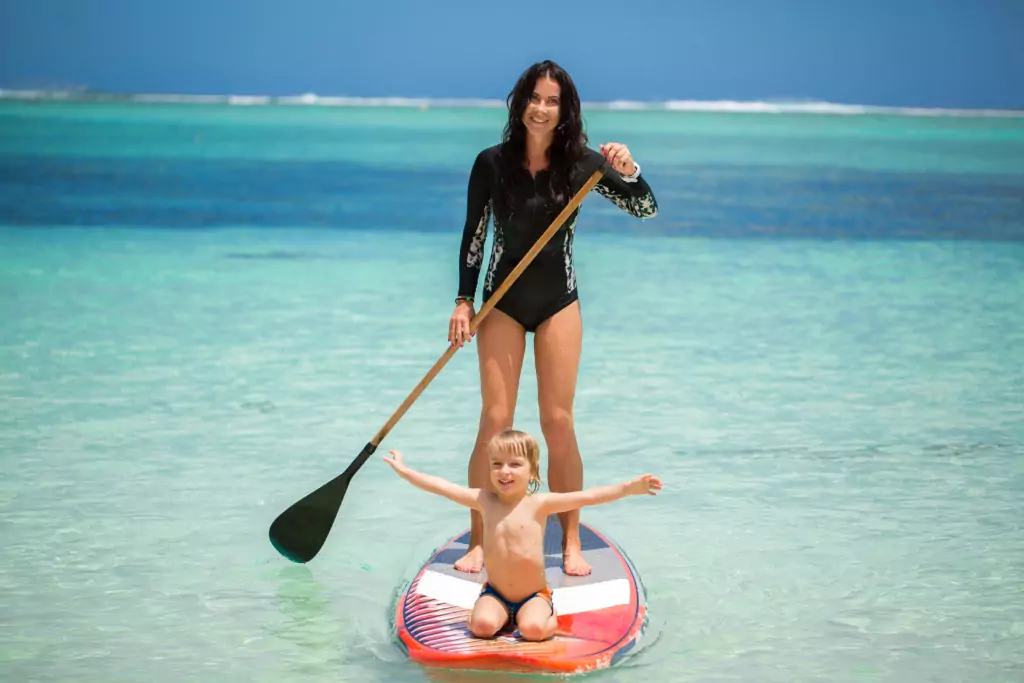
There is a type of family that involves their children in watersports at an early age when they are just around 4 to 6 years old. It tells tour operators that offering paddleboarding can nicely be done to the little guests as well. Some extra things for considering would be asking parents if they think they might need assistance in helping kids have a good practice in it.
Your best bet in giving a hand would be suggesting doing practice experience a fun experience. Knowledged parents indicate the following:
- Convince parents that their kids should feel comfortable falling off the board – Suggest them to develop a game out of it, the aim of which can be jumping off the board, swimming back, and climbing up by doing everything mentioned as fast as possible.
- Let parents know about the importance of maintaining balance and stability on board – If you see that kids are old enough to jump on and rock SUP, this might become a great way to suggest battling on it. That will be a fun way for both parents and their kids to find out who can stand on SUP longer, and, at the same time, let the latter practice stability and balancing!
- Shallow water as a way to go for early starters – The final tip to giveaway to parents whose kids are just beginning to paddleboard is advising them to start in shallow water. That way, they can stand next to their offsprings to support in case they are still taking their time to learn. It will surely make a few attempts to nail it, but that way, parents can make sure that paddleboarding is enjoyable for both them and their loved little ones.
2) Kayaking
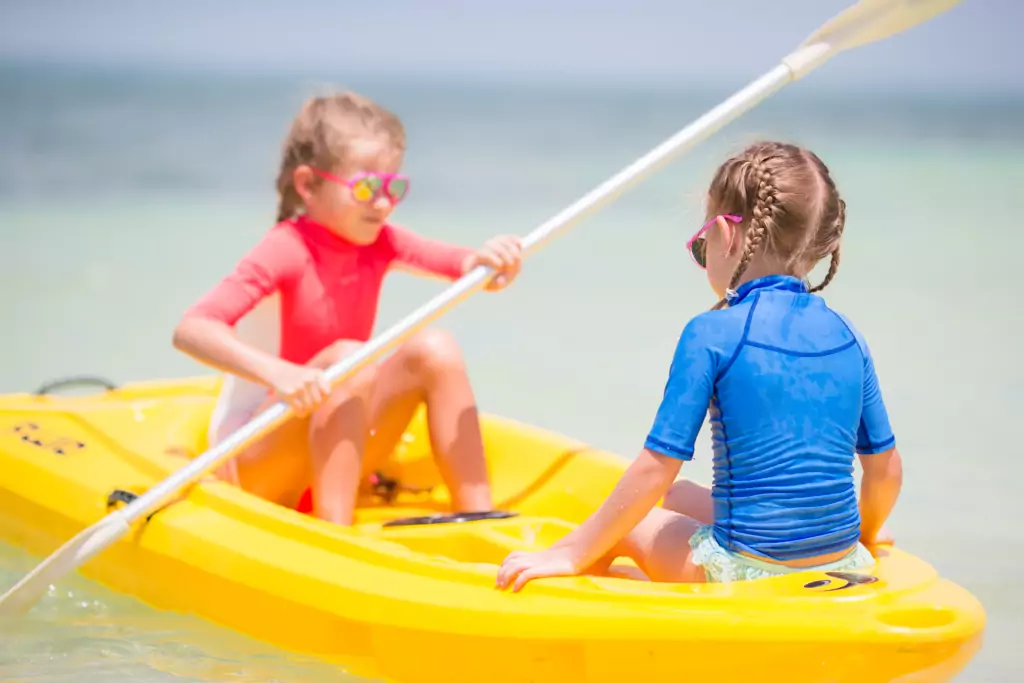
Parents knowing that their kids can start kayaking as early as they are about five years old would indeed take them the next time they visit your locations to practice their water sports!
One of the key ways to accommodate kids would be to offer the kid-sized kayak. It can be up to 2 times smaller than a regular one, like the one shown in the picture. This type of kayak is great to have available at your rental location because it lets kids stay engaged with paddling vs. if they were just sitting behind their parents in the regular one.
It is also great that it will likely have a more extended life period than a traditional kayak. That is so because kids are not expected to spend an equal amount of time involved in this water-based activity instead of their parents.
Once they are back, praise them for their effort! They made a big step in their life by trying something new and overcame their fear. At least verbally, after being rewarded, they will surely ask their parents to try it again sometime later and come back to your location eventually.
3) Pedal Boating
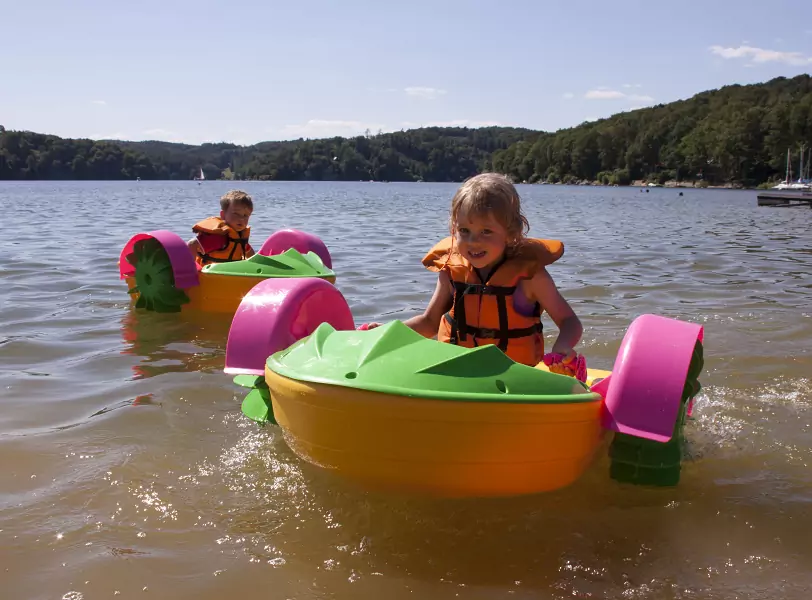
A piece of equipment and activity specifically designed for kids! Just look at this thing and imagine you are the only one offering it for renting in your area. That will just cross out your competition, and parents will be coming to visit you for this alone!
Another great thing about it is its low price tag, and it does not require maintenance! Their life is good for up to 7 years, and they are equipped with wheel guards, which provides anti-splashing and safety. If you are offering rentals on a lake or pond or even river/ocean and it is not a wavy day, why not get a couple of them and promote on sunny days?
4) Skimboarding
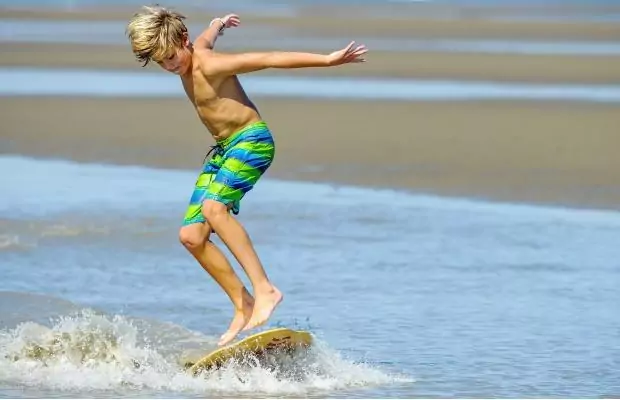
Another watersport activity parents and their offsprings can equally enjoy! It is quite likely that kids will not master it straight away, but tour operators can help to smooth this process; here is how:
- Material type can play a huge deal in both safety and kid’s engagement in the activity. Skimboards are made of different materials, but wood and graphite are the best for rookies. They are also the cheapest ones and can help first-time riders nail the basics in techniques.
- Size – Finding out from kid what they are down to today: taking on waves or surface can help a rental provider to determine what size of skimboard should be recommended for taking if you have multiple of them. For instance, large ones will be fast but not swift in carving vs. small ones, which are slower but respond quickly to the body movements.
- Thickness, Tail, and Shape – another form factor that depends on a kid’s mood and readiness for taking on an action. Thick boards glide and float better but do not turn or carve responsively. On the other hand, thin ones are harder to control at high speeds but provide flexibility in maneuvering. Make sure that you have pintail in skimboard because it will add extra stability to its overall performance, which will make them safer and more fun to use. Also, beware that a more comprehensive template is better for speed and flatland, whereas large noses and tails spin swift and perform well in small waves and obstacles.
Ultimately, your best judgment on the thinking process will be figuring out what brings kids to your rental facility. Would that be flatland skimboarding or wave skimboarding?
5) Dock Jumping
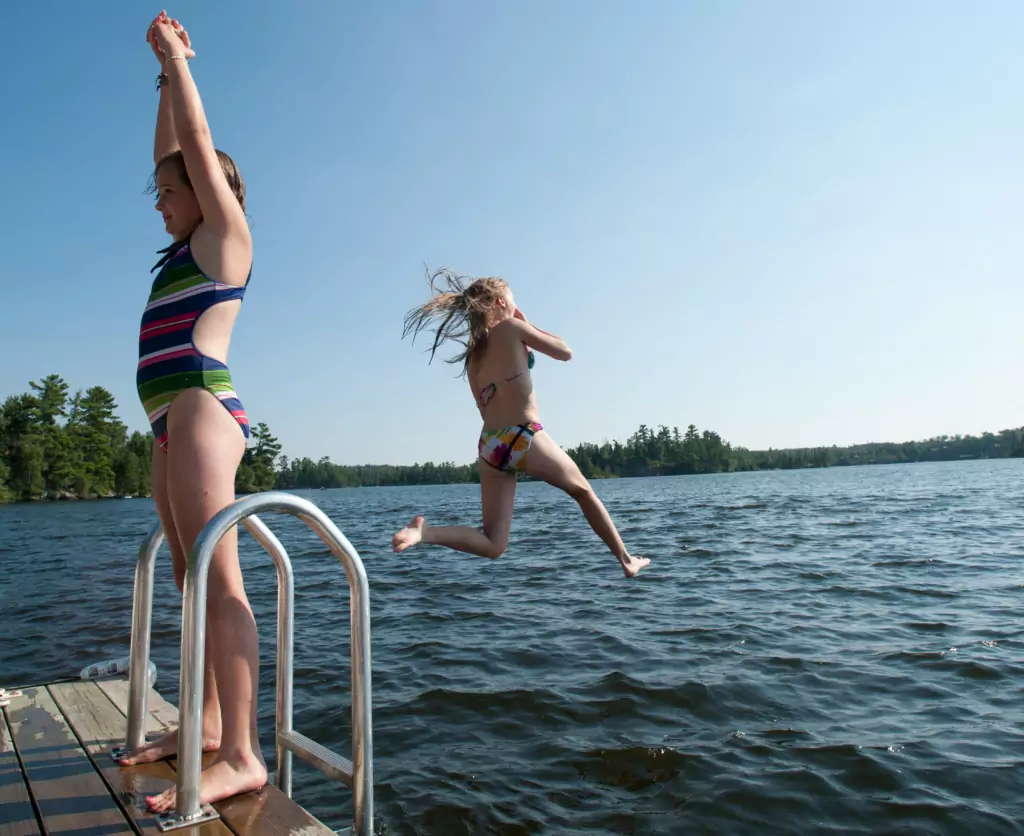
By now, you should be convinced that kids might be challenging in entertaining all the time while they are at your rental facility. They are bored when their parents are only halfway through their day on the water. Instead of saying goodbye to your visitors who could have spent a longer time with you, consider constructing a ramp. This is great if you operate on a lake or pond, which will become another way to engage kids.
The dock will be a great addition to your rental facility! It can also turn into an opportunity for offering other accessories to rent, such as swim masks, glasses, etc. Additionally, it is very important that you do the dock maintenance on a regular basis because you don’t want your customers to get injured, which quite often occurs when serving senior citizens.
6) Surfing
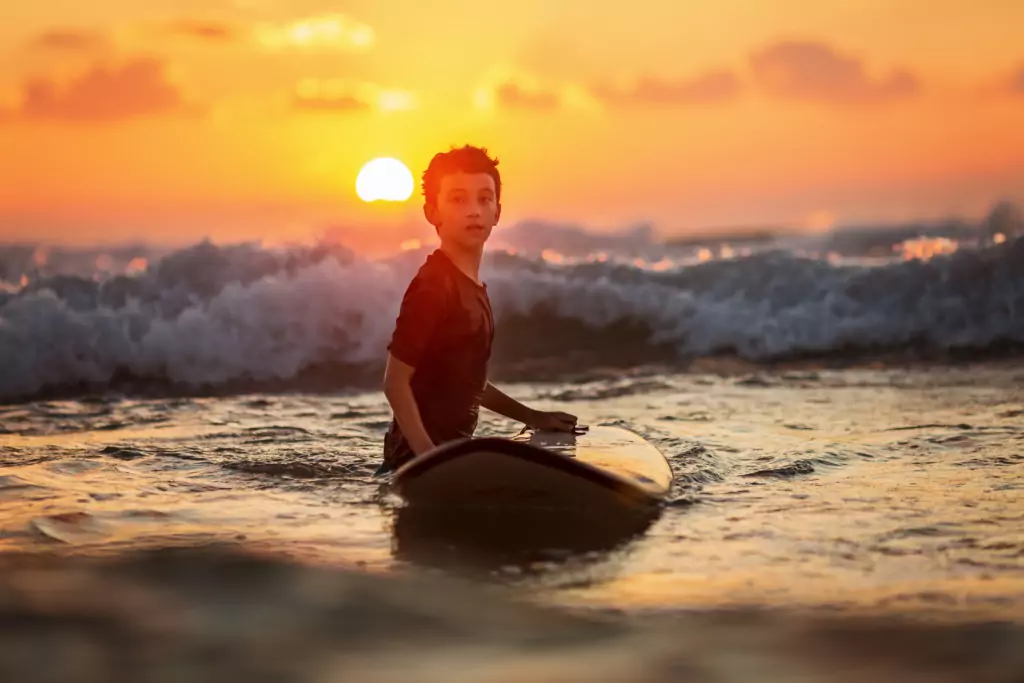
Another type of activity where safety and extra planning are critical. If you have parents visiting your location with a child who has never tried surfing before, try advising those parents in a similar way we suggested earlier for stand up paddleboarding:
- Start with the basics – Kid has a long way to go before making it even to the surfing board. You can suggest parents consider learning how to fall safely, swim for longer times, and run from white water. Once they feel like their kid has mastered it, suggest them taking to the boards.
- Picking the board with a leash – Find the board in your inventory, which will suit the kid’s height, and make sure that it also has a leash attached to it so that they do not lose it.
- Extra gear arrangement for kids – Consider obtaining the following pieces of gear for renting out when someone visits you next time with their kids:
- Wetsuit: This will make the kid feel warm, especially if it feels like water might be just a little cold for spending the extended time in it.
- Wetsuit Boots: For keeping the feet warm, it comes in a few different sizes.
- Wetsuit Gloves: Keeps fingers warm in winter and helps to maintain an anti-scratch effect in summer.
- Wetsuit Hood: Good for use in windy weather.
- Rash Vest: Ask parents for how long they are planning to be around, and if they tell you longer than a couple of hours, suggest them putting a rash vest underneath a wetsuit to avoid sand rubbing and feeling sunburns.
Equipping your inventory with kid’s related gear can turn into a cash cow! Parents will not likely have most of these items because they might be just occasional visitors.
7) Row Boating
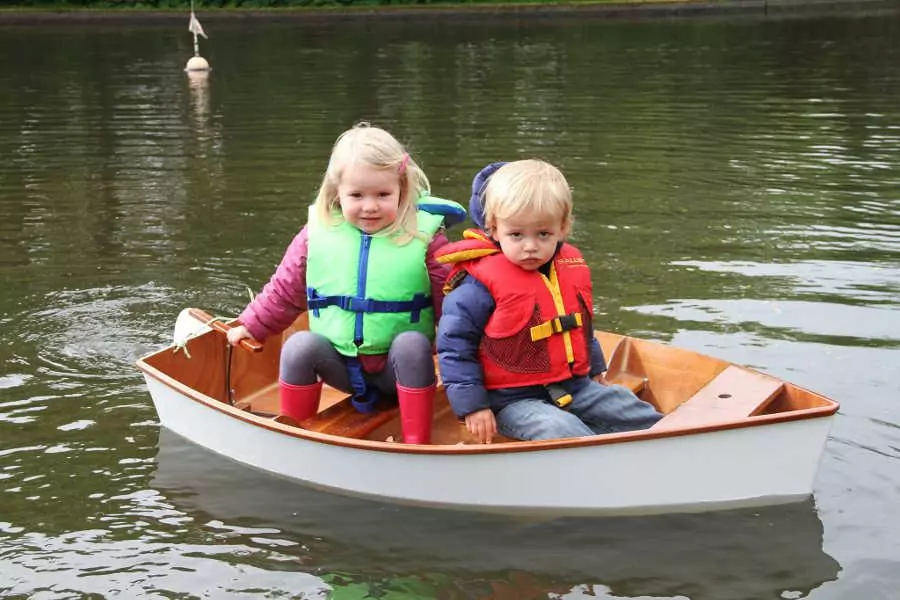
Another kind of activity can have a kid-oriented focus if you can rent out such equipment to them! This type of activity engages and focuses kids at maximum because only their effort will take them where they want. Here are some extra takeaways parents share:
- Wearing Life Jacket as a law demand – The US Coast Guard requires children aged under 13 to wear a life jacket all the time. If parents have not brought one themselves, make sure you, as a tour operator, can supply them with one. Remind parents that they should wear it all the time and that it should feel tight on the kid.
- Suggest putting on extra gear for keeping them warm – See the examples discussed under “Surfing”, as they would work equally fine in this case as well.
- Ask parents if their kids are water-wise – To find this out, you may want to ask parents if their child has ever been enrolled in a boating and water safety course, and, if not, then let them know that their hands and feet should remain inside the boat at all the time. Kids should not run up and down or lean over the rail when the vessel is in motion. If you are renting out the inflatable boat, make sure that it is inflated, ask them if they know how to do this, and deflate it should anything happen on the water.
8) Snorkeling
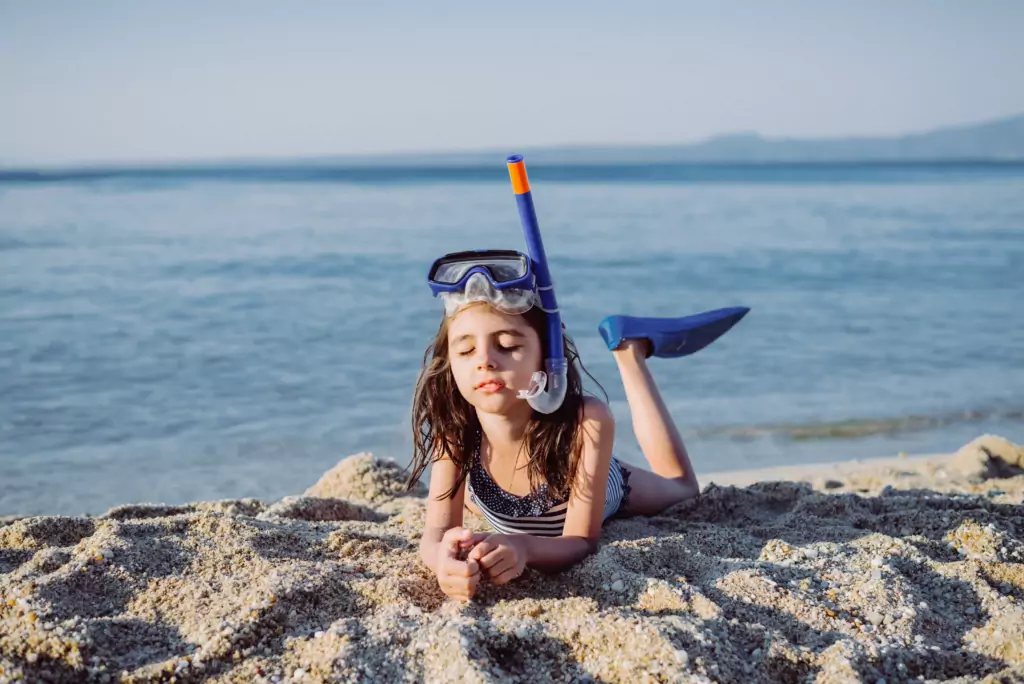
Claimed to be one of the most exciting water-based activities! If your marina has a rich underwater life, consider obtaining snorkeling gear for renting out. This watersport can be great even for those who do not have advanced skills in swimming. To ensure that a tour operator delivers this activity as safe as possible, here are the things to consider related to gear:
Masks: In general, there are two types of snorkeling masks for kids: regular ones and full-face one. Both masks differ in features and can be recommended for renting out based on the experience kid has/lacks in snorkeling. While there might be tons of different options out there, parents recommend having the following features for the best experience:
Regular Mask – Best for Intermediate Swimmers
Key Features:
- Provide coverage until the nose
- High-quality silicone rubber
- Durable polycarbonate plastic lens
- Even pressure dispersion
Full-Face Mask – Best for Beginners
Key Features:
- Cover the entire face
- Allows natural breathing underwater
- Ingenious defroster to eliminate fogging
- Dry top snorkel design
- Polycarbonate lens
- Soft silicone skirt
Tubes: In general, there are two types of snorkeling masks for kids: regular ones and full-face one. You should have snorkel tubes together with masks all the time, or better, as part of a set. The gear lets breathing and can be equipped with extra pieces to let the water come out. When shopping for snorkeling tubes, refer to the following checklist of features:
- Soft silicone mouthpiece
- Contoured tube style
- Heavy-duty splash guard
- Large elliptic one-way exhaust valve
- Semi-dry top
- Easy purge valve
- Deep-well air reservoir
Fins: Snorkeling fins should facilitate quick and effortless movements in the water. They should fit just okay – not too tight, as it can cut off blood circulation, and too loose, as it may result in blisters and could be lost while swimming. For practical reasons, going for open-heel ones with adjustable straps are recommended to go for, as these can be adjusted to any regular-sized kids. Tour operators can also consider getting a bigger size and pair them with tick neoprene socks. Fins must be lightweight and flexible. This helps to ensure that kids do not get tired quickly and stay engaged in the activity for longer. The following are other features to consider when selecting fins:
- Open-heel design
- Durable side rails for maximum propulsion
- Vented fin blades for more power and easy maneuvering
Swimwear: Swimwear protects children from stingers in the water. Depending on where your rental facility is located, you can select a full wetsuit or a simple rash guard. For cold temperatures, a wetsuit will keep your child warm by trapping a layer of water inside the garment, whereas rash guards are for warmer temperatures. They also come in different sizes for varying levels of coverage, but most importantly, they should have the following features:
- Made of nylon-2-neoprene
- 2mm thickness for ease of movement
- Excellent core warming capability
- Good anatomical fit
- Flat-lock seam stitches
- Helps shield wearer from UV rays
Other water accessories: Lastly, if you want to stand out from your competition in offering the best possible snorkeling experience in your area, consider getting the following accessories to your inventory next time you plan to add new gear:
- Kickboards – Great for kids who do not feel confident about their swimming abilities
- Life Vests – Come with a variety of features; the following are some of them: Squeeze-style side-release buckle closure, adjustable waist strap, great lift weight, and comfort
- ReefBoard – let observing and photograph the semi-submerged in the water or breathe through a snorkel. It comes complete with a big clear window, offering a full 14” comprehensive view of the marine life. It is safe and easy to carry around.
9) Flyboarding
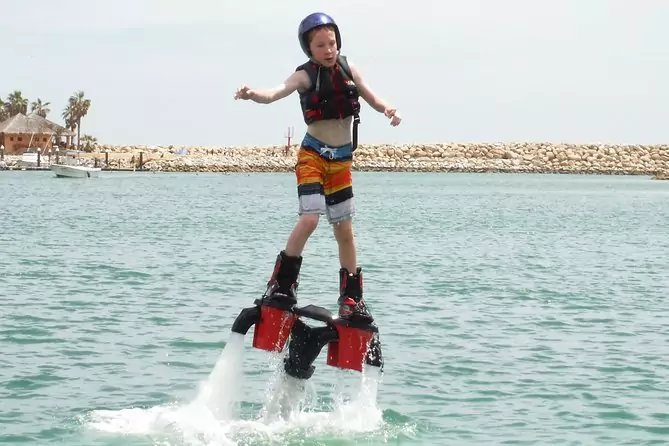
You may have never even heard of this activity before because it is still relatively new. It was monetized not a long ago on America Got Talent show in 2015 when a 16-year old kid made an outstanding performance with it. Kids at an earlier age can also try this fancy gadget if you provide all the safety with it. To ensure that it happens, tour operators should recommend parents to accompany their children while performing this activity.
First of all, it should be clear what flyboards exactly do. It is a type of water jetpack device attached to a Personal Water Craft (PWC), which supplies propulsion to drive the Flyboard through the water. A Flyboard rider stands on a board connected by a long hose to a PWC. Water gets forced under pressure to a pair of boots with jet nozzles underneath. If everything is done right, it should provide the rider’s thrust to fly up in the air.
To avoid fatigue and general tiredness, the rest should be taken in the water between rides. Make sure to supply a personal flotation device and helmet for ensuring safety. Keep sessions for up to 15 minutes only, as it should be sufficient for kids to enjoy this activity.
10) Floating Water Pad
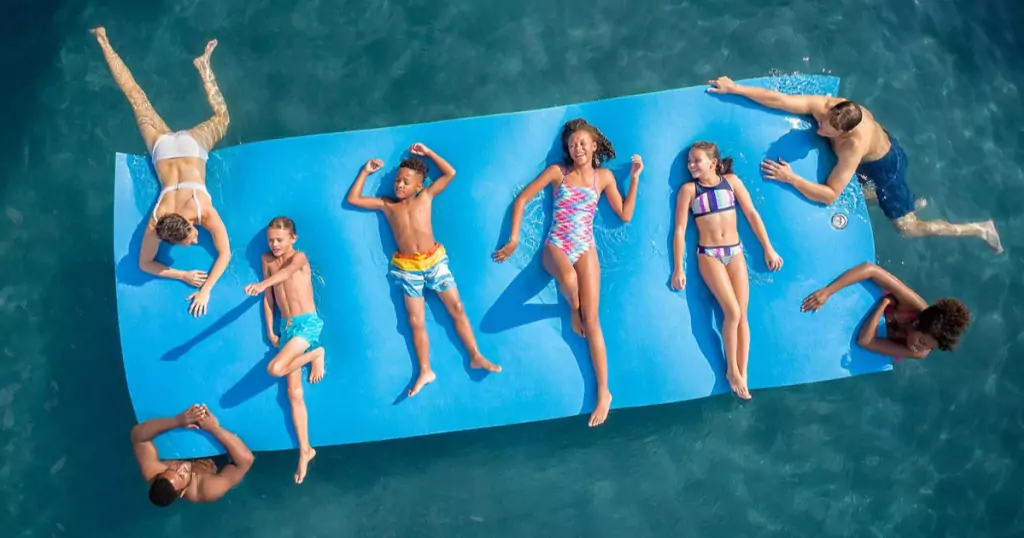
Lastly, and probably the most unusual equipment on our list, is the floating water pad! The beauty of this rental piece is that parents and their children can enjoy it all simultaneously for how long they wish to, and it can fit up to 5 kids at a time, as claimed by the manufacturers. The pad does not require maintenance and has long-life durability valid for several seasons.
Another great feature about them is that they are made of high-density foam. You do not ever need to inflate it. Tour operators can also offer them an option to tie them off to the rented boat or dock to stage other watersports activities.
Floating water mats come in different sizes with many features. It would take a separate blog article to cover them all, but here are some key things you should pay attention to when selecting it:
Size
The best foam float mat will be big enough to accommodate a big group of kids, so no one gets left out.
Weight Capacity
If it exceeds, it will sink below the surface instead of floating on top of the water, so make sure you know how many people it can accommodate. Note that If everyone is standing in the same area of the pad, some sinking will take place in that spot.
Quality
Choosing a high-quality foam mat that won’t rip, tear, or puncture is your best bet. Although the price of inflatable water mats may be attractive, the experience will be as good as from a nice thick foam mat.
Foam vs. Inflatable
When deciding between a foam versus an inflatable floating water mat, the key determining factors are price, convenience, and durability.
Foam mats tend to be more durable, and you never need to better inflating them. However, they’re also bulkier for storage and transportation, and their price tags are higher than for inflatable ones. On the other hand, inflatable mats are relatively compact when deflated. Though you have to blow them up each time someone wants to rent them out. They also may tear or puncture quicker.
Ultimately, you get what you pay for, so if your budget, we encourage you to think long-term with a high-quality foam float pad. You will likely regret not spending a bit more on the better product. So choose wisely, and think of uncontrollable kids as it comes to damage.
Final Thoughts to Consider
There you have it! Watersports for kids, just like for adults, should be arranged and performed safely, especially by the former. It is on tour operators to ensure that their facility provides everything to make the experience memorable and safe because they are responsible for taking action should anything bad happen.
This article covered all the information to make this happen, promote correctly, and prepare you for any possible unforeseen circumstances.

